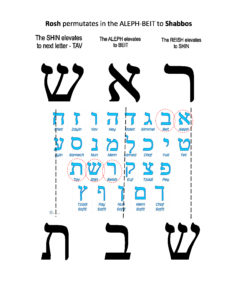
20 May Naso and the Nazir; I Want a Raise (+recovery insights)
r. 5780
Includes Insights on Recovery
Inspired by the teachings of Harav Yitzchak Ginsburgh and Rabbi Moshe Genuth
 A most meaningful teaching of Torah is the teaching ‘to raise up’… to elevate… ‘Naso’ . This concept can apply to a person, place or thing such as ones tefillah (prayer) or an object to be used for mitzvah such as our food. It could be the 4 species of Sukkoth…or the putting on of tallis and tefillin. We see in this parsha that the act of taking a census .i.e. ‘counting each head’ which raises or elevates each person and the collective Nation of Israel. Everything in this world can have a potentially elevating impact as we elevate ourselves as Jews, others and Klol Yisroel, and the world.
A most meaningful teaching of Torah is the teaching ‘to raise up’… to elevate… ‘Naso’ . This concept can apply to a person, place or thing such as ones tefillah (prayer) or an object to be used for mitzvah such as our food. It could be the 4 species of Sukkoth…or the putting on of tallis and tefillin. We see in this parsha that the act of taking a census .i.e. ‘counting each head’ which raises or elevates each person and the collective Nation of Israel. Everything in this world can have a potentially elevating impact as we elevate ourselves as Jews, others and Klol Yisroel, and the world.
In Parshas Bamidbar and Naso we see the idea of ‘raising up the head’. In Bamidbar, in the counting of the census, we see the word for ‘census’ is ‘rosh’. The same word ‘rosh’ is used for ‘head‘.
As ‘Rosh = Shabbos ‘
When we look at a the raising (elevating) of the word ‘rosh’ ר-א-ש using Kabbalistic mesora (tradition), we ‘raise’ each letter up to its following letter in the Hebrew alphabet so; ר –reish becomes ש-shin, א- aleph becomes ב- beit.., and ש-shin becomes ת- tet, thereby revealing the concealed word Shabbos- ש-ב-ת. The head or ‘rosh’ represents the elevation of all 6 (mundane) days of creation. Here the ‘rosh’ as the head of the week is the culmination of all of the 6 days that are ‘raised up’ as the 7th-day, Shabbos – ש-ב-ת . The rosh ר-א-ש becomes elevated as Shabbos – ש-ב-ת… as ‘the head becomes raised’. (see diagram below)
Naso- To Raise Up
When the Kohanim perform their blessing to the congregation, they ‘raise the palms of their hands’. The Kohan with his mind, his heart and his hands, becomes a conduit for blessing. The 10 fingers of the hands of the Kohanim became the points of emanation of the rectifying powers of the 10 sefirot as his ‘yad’ or hand. We often hear the phrase ‘by the hand of G-d’ which is an anthropomorphization of G-ds spiritual light transforming into a pluralistic reality of the physical and spiritual worlds at the point of contraction of His Light . This point of contraction is the tsimtsum. Our entire being, as Jewish individual and collectively are ‘as as-a tsimtsum’, a point of contraction for receiving and transmitting spiritual energy. At the time of the Temple, Kohanim were effective at this particular task of being a conduit for blessings. These spiritual energies were available and the Kohanim were in their vigil state of purity to be a conduit to receive and bless us. (For more on the letter ‘YUD’ see Rav Ginsburgh at http://www.inner.org/hebleter/yud.htm).
When Moses gave Hosea (to be later known as Yohoshua [Joshua] ) the gift of a ‘yud’, there was a reflected change in his name and his being. This blessing of the ‘yud’ gave Yohoshua the ability to lead the nation. As we said, the letter yud has a gematria of 10, which represents the complete 10 units of the sefirot .
The point of contraction of G-ds light, the Tsimtsum, is also referred to as the point of the ‘yud’. The tetragammaton (The Name) Y- K- * Y reflects the loftiest world of the 4 worlds of Creation; Atzilut/Emanation, Beriyah/Creation, Yetzira/Foramtion, Asya/Action . Yohoshua thus had the ability with the addition of the ‘yud’ to his name; ‘his being’, to then be able to be a suitable leader of Klol Yisroel by being able to connect and receive from a lofty spiritual place. Yohoshua aqcuired a powerful connectioin to the lofty realm of emanation. He was raised up’.
The Nazir (consecrated, separated) Parshas Naso
In the pursuit of a lacking state of spiritual purity one may take on the astringent vows of the Nazir who’s purpose is to raise himself up to a more pure and holy state. During this period of vow an individual separates himself out from many things of the physical world that may lead to temptation and transgression in order to focus on tshuva, and a return to a holy state with G-d.
This includes having all his hair shaved at the beginning and end of the period of his Nazirite vow. The hair is believed to hold spiritual impurity. The hair is actually like spiritual conduits….antennae (a reason why men wear beards; to connect the higher and lower parts of their neshama [spirit]). As the individual wishes to reach a higher state of purity, his hair remaining intact would therefore be considered an obstacle to this end. At the end of this period, the Nazirs’ hair roots that have grown out, now containing the last of the hairs ‘impurity’ and are once again shaven off as the process of the Nazir is near completion. Lastly, these final cuttings with the final remnants of impurity are burned as a part of an offering for rectification (tikun). It is interesting that today, scientific DNA testing of the hair can reveal ‘toxins’ that have been in the body from many months ago.
The Nazir and Recovery
In a world so filled with desire and addiction, we learn from the Nazir that where there are obstacles to acquiring a greater connection with G-d, we need to look at divesting or ‘cutting away ‘ of certain things in order to create a void to be able to receive a greater spiritual connection. For example, a Nazir must remove himself (cut away, abstain from) anything made of the grape vine; wine grapes, skins of grapes, seeds of grapes . Amongst the prohibitions of a Nazir are sexual relations. We learn the need to separate ourselves from the things that may cause us ‘blockage’ and to maximize our ability to connect spiritually.
In the classic sefer Hilchos Tshuvah – The Laws of Tshuvah, the Rambam teaches us that the first step to acquiring a more meaningful spiritual relationship is to stop doing the things that create obstacles to our return to pristine state. The 12 Step Program of abstinence of addiction recovery shares the same philosophy of abstinence , separation and elevation . One should know the Rambams’ Laws of Tshuvah. One should remove themselves, ‘make a fence’ from any possible temptations.
Elevating…’Raising up’from The 49 Days of the Omer
The process of elevating ourselves and the world is integral to Judaism. This is key to the bringing of Mashiach. It is through the probing, investigating, examining and elevating of the existential questions of life that this can be accomplished. During the period of the 49 Days of the Omer – The ‘50 Gates of Binah (understanding), the emotive or ‘heart’ aspects of our character can be elevated by what is referred to as ‘the holding and elevating [of] 2 opposites’. It is as through the process of bringing unity between ‘the 2 opposites’ (opposing forces are not necessarily diametrically opposed) that elevation and transformation can occur. As it is during the 49 Days of the Omer( as the 50 Gates Of Binah) that by looking at the paradoxical 49 different combinations of the secrets of our heart, and then elevating ourselves, that we come to rectify our heart through tackling the deeper questions of our life.
The answers are in the questions. There are no absolutes, and higher Truths are found in elevating opposites.
Marriage and the Raising Opposites
There is perhaps no greater model than marriage to illustrate ‘ 2 opposites’ that we must strive to elevate ones-self and another in unity…’I am my beloved and my beloved is mine. This speaks to the elevating of 2 souls as One.
Ultimately, everything we do is a reflection of our ‘marriage’ with G-d and Creation.
The marriage of a Husband and Wife is a metaphor and microcosm for our interaction with G-d and all Creation.
Ni-su-im, Hebrew for marriage, is from the same root word as Naso. As ‘2 opposites’,
a husband must strive to elevate his wife, and a wife her husband.
The Menorah- The Elevating Light (Parsha Beha’alotcha)
Our service to Hashem is likened to a bride and groom . Aaron had a specific duty in his service in the Mishkan. It was Aaron who completed the Menorah by lighting and thus inaugurating the Menorah. Although it was a mitzvah to build the Menorah, it was deemed a separate Mitzvah that Aaron light and inaugurate the Menorah. Each time the Menorah was light, it was Aaron’s specific duty to clean, assemble, add olive oil and light the menorah. Each time the Menorah was re-assembled and lit, it was considered as a new Menorah, and a ‘new’ mitzvah that would signify a flame that included the flame of Chanukah and carried throughout the journey of the exile to the coming of Mashiach.
It is our teaching that every mitzvah, even when done repeatedly is new each time
as we are new and continually recreated (reborn) through service to G-d.
Each day with our spouse is also like kindling the flame of marriage anew.
There is a powerful connection between Aaron lighting the menorah and the Shema. The Hebrew word of flame is ‘shelhavet’ and has a gematria (numerical value) of 737. In the Shema, we say ‘with all your heart, and with all your soul, and with all your might.” (B’chol levavcha, uvechol nafshecha uvechol me’odecha). The numerical value of this phrase is also 737. Both the word shelhavet (737) and this verse of the shema (737) share the concept of raising up.
Lighting the flame of the candle
We learn out from this Parsha the proper way of lighting the candle flame of the of the Menorah . The first independent flame must be held in place to light the unlit candle until the second candles’ flame is able to burn independently. We can that when both flames fuse into one tall and strong flame, both flames are strong, independent and unified. This is a metaphor for marriage and all relationships in life.
We must look to touch every Jew to help him to ignite the spark within, and we must nurture him until his spark becomes a strong independent flame. We must continually nurture our relationship with G-d and others. We must be strong individually and together.
An interesting connection of the letters of Rosh (head) and Shabbos;

Leib Getzel (Lawrence) Lax
Addictions and Counseling (Honours)
http://lawrencelax.com